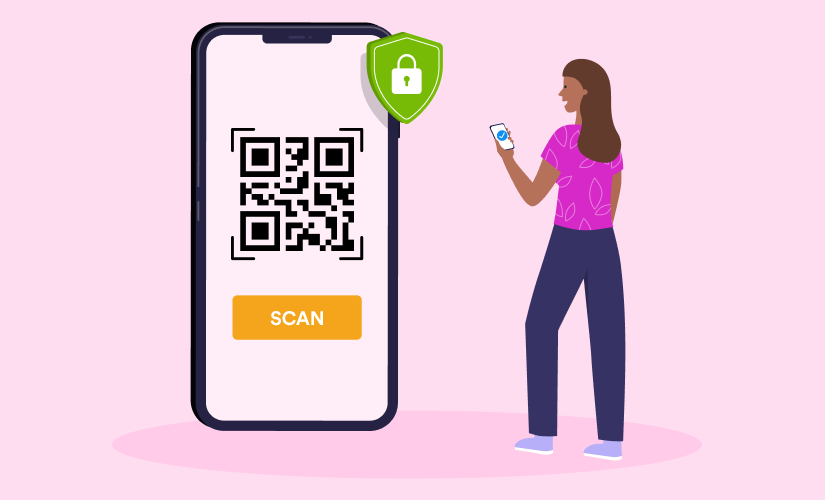Safeguarding Your Digital Interactions: Security and Privacy Considerations in QR Code Readers
Introduction
As QR code readers continue to gain popularity and become an integral part of our daily lives, it is crucial to understand and address the security and privacy considerations associated with this technology. While QR codes offer convenience and seamless digital interactions, they also present potential risks and vulnerabilities that can compromise sensitive information. In this comprehensive blog post, we delve into the importance of security and privacy in QR code readers, providing valuable insights on how individuals and businesses can take proactive measures to safeguard their digital interactions.
QR Code Security Vulnerabilities
QR codes, just like any other technology, are not immune to security vulnerabilities. It is essential to explore the various risks that can arise from scanning QR codes, such as the possibility of encountering malicious codes, falling victim to phishing attacks, or being susceptible to social engineering techniques. By understanding these risks, individuals can be more cautious and aware when scanning unfamiliar or suspicious QR codes, thus minimizing the chances of becoming victims of fraudulent schemes.
Secure QR Code Generation
The process of generating QR codes itself can introduce security implications. It is important to highlight best practices for creating secure QR codes, such as using trusted sources and reputable QR code generators. By relying on reliable sources, individuals and businesses can ensure that the generated QR codes do not compromise user privacy or security. Verifying the authenticity and security of QR code generation platforms is crucial to minimize the risk of generating codes that may lead to compromised digital interactions.
Authentication and Encryption
Authentication and encryption play significant roles in enhancing the security of QR code readers. Secure authentication protocols can prevent unauthorized access to sensitive information, ensuring that only authorized individuals can interact with QR codes. Additionally, encryption mechanisms can protect the data transmitted through QR codes, guaranteeing the confidentiality and integrity of user information. By implementing robust authentication and encryption measures, businesses and individuals can fortify the security of their QR code interactions.
QR Code Scanning Apps and Security Features
The choice of QR code scanning apps can greatly impact the security of digital interactions. It is crucial to explore the security features available in QR code scanning apps and select reputable ones that prioritize user privacy and provide additional security layers. These features may include built-in URL scanners to check for potentially malicious links, antivirus checks to detect malware, and permission controls to manage access to personal data. Downloading QR code scanning apps from official and trusted sources mitigates the risk of encountering counterfeit or malicious applications.
Privacy Concerns and Data Collection
QR code readers have raised concerns regarding privacy and data collection practices. It is important to address these concerns by highlighting the types of personal information that can be collected through QR codes. Users should be aware of the importance of providing informed consent when sharing personal data and the necessity for businesses to adhere to privacy regulations and policies to protect user information. Transparent privacy policies and responsible data handling practices are essential to establish trust and ensure that personal data is handled securely.
User Education and Awareness
User education and awareness play a crucial role in mitigating security risks associated with QR code readers. Individuals should be informed about potential risks, such as scanning QR codes from unknown sources or unsolicited codes received through email or messaging platforms. Education should emphasize the importance of verifying the source and destination of QR codes before scanning, being cautious of potential social engineering attempts, and staying informed about emerging threats related to QR codes. By fostering a culture of awareness and education, individuals can protect themselves from security vulnerabilities.
Business Best Practices
Businesses utilizing QR codes in their marketing or operational strategies should adopt best practices to ensure the security and privacy of their QR code campaigns. These practices may include implementing secure QR code generation methods, using reputable QR code scanning apps with robust security features, and conducting regular security audits to identify and address vulnerabilities. Additionally, businesses should prioritize transparent privacy policies, clearly communicating how customer data is handled, and implementing responsible data handling practices to protect user privacy.
QR Code Reader Updates and Patching
Regularly updating QR code reader apps is crucial for maintaining security. App updates often include security patches that address vulnerabilities and protect users from potential threats. Individuals and businesses should be encouraged to keep their QR code scanning apps up to date to ensure they are equipped with the latest security enhancements and safeguards against emerging risks.
Two-Factor Authentication (2FA)
QR codes can be used as a form of two-factor authentication (2FA) to enhance security. By scanning a QR code presented on a trusted device or platform, users can verify their identity and gain access to sensitive information or perform secure transactions. Discuss the benefits of using QR codes as a second factor in the authentication process and the added layer of security it provides.
Secure QR Code Placement
Consider the importance of securely placing QR codes to prevent tampering or malicious replacement. Businesses should ensure that QR codes are displayed in a secure and trusted environment to prevent unauthorized modification. This includes physical security measures to protect QR codes in public spaces and secure digital placement on trusted websites or applications.
QR Code Content Validation
Highlight the significance of validating the content of QR codes before scanning. Users should exercise caution when scanning QR codes that promise unrealistic rewards, discounts, or prizes. Educate readers on the importance of verifying the source of the QR code and cross-referencing information to ensure its legitimacy before interacting with it.
Data Encryption and Storage
Address the importance of data encryption and secure storage practices when utilizing QR code readers. Businesses should implement robust encryption techniques to protect sensitive user information transmitted through QR codes. Additionally, they should adhere to industry best practices for securely storing any user data collected during QR code interactions to prevent unauthorized access or data breaches.
Mobile Device Security
Discuss the significance of maintaining strong security measures on mobile devices used for scanning QR codes. Users should be encouraged to keep their devices updated with the latest security patches, use strong passwords or biometric authentication, and employ security features such as remote device wipe or tracking in case of theft or loss.
Boosting Marketing Strategies with QR Code Readers: Innovative Ways to Engage Customers
QR Code Tracking and Analytics
Explain the importance of responsible tracking and analytics practices when using QR codes for marketing or business purposes. Businesses should be transparent about the data they collect through QR code interactions and provide clear options for users to opt-in or opt-out of data tracking. Emphasize the need for compliance with privacy regulations and ethical data handling practices.
Continuous Monitoring and Risk Assessment
Promote the idea of continuous monitoring and risk assessment to stay ahead of emerging security threats in QR code readers. Businesses should regularly evaluate the security of their QR code systems, conduct penetration testing, and stay updated on industry trends and best practices to proactively address any vulnerabilities or risks.
Conclusion
While QR code readers offer convenience and exciting possibilities for seamless digital interactions, it is paramount to prioritize security and privacy considerations. By understanding the potential risks, implementing best practices, and staying informed about emerging threats, individuals and businesses can safeguard their digital interactions, protect sensitive information, and enjoy the benefits of QR codes with peace of mind. With vigilance and proactive measures, we can leverage the power of QR code readers while maintaining a secure and private digital environment.













